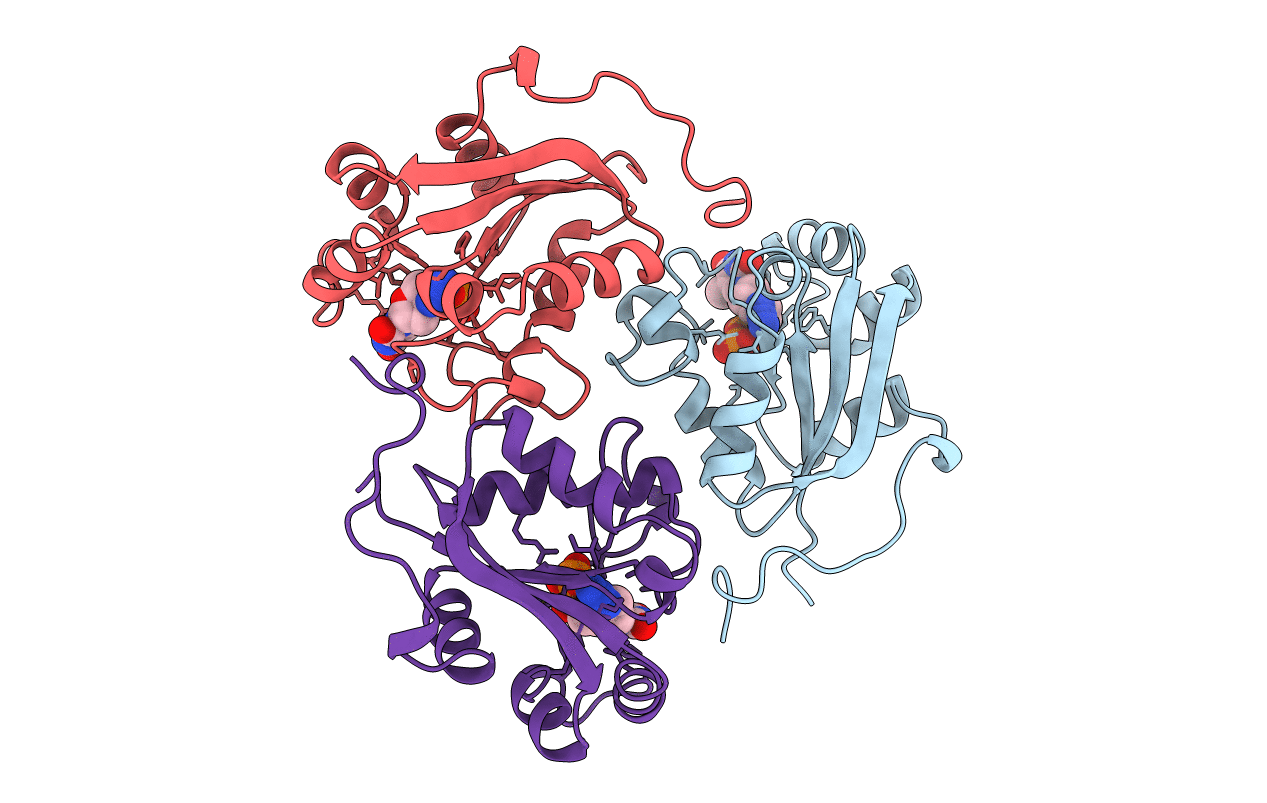
Deposition Date
1997-04-30
Release Date
1997-08-20
Last Version Date
2024-02-14
Entry Detail
PDB ID:
1LWX
Keywords:
Title:
AZT DIPHOSPHATE BINDING TO NUCLEOSIDE DIPHOSPHATE KINASE
Biological Source:
Source Organism:
Dictyostelium discoideum (Taxon ID: 44689)
Host Organism:
Method Details:
Experimental Method:
Resolution:
2.30 Å
R-Value Free:
0.28
R-Value Work:
0.21
R-Value Observed:
0.21
Space Group:
P 31 2 1


